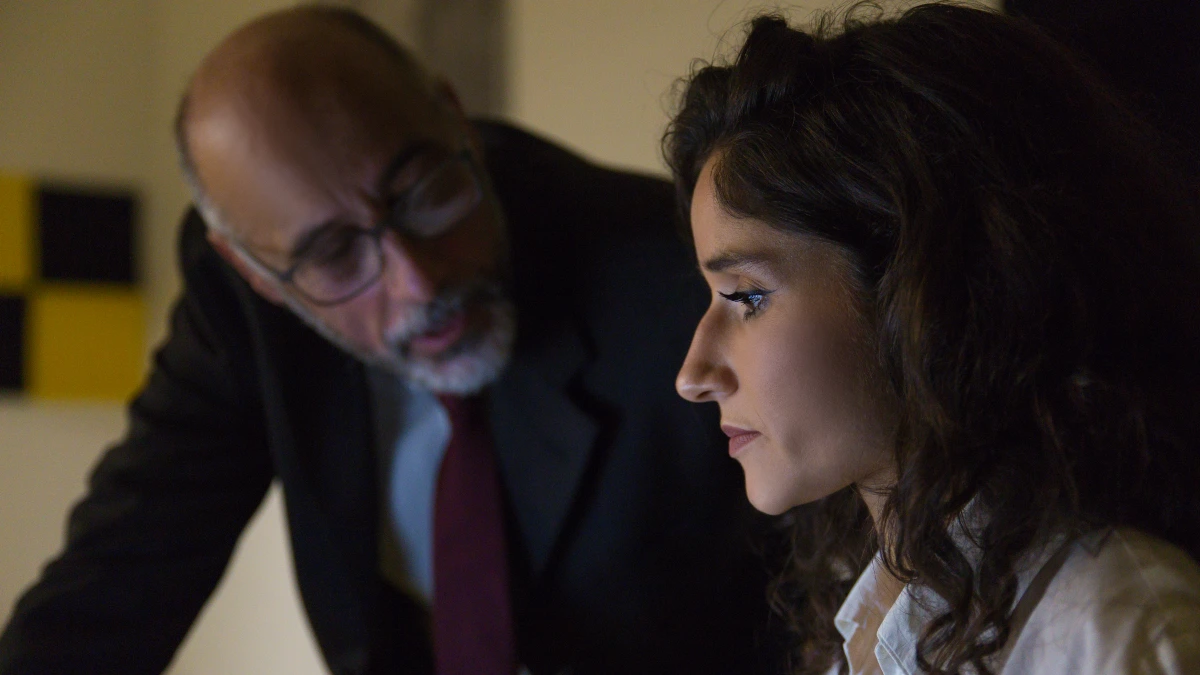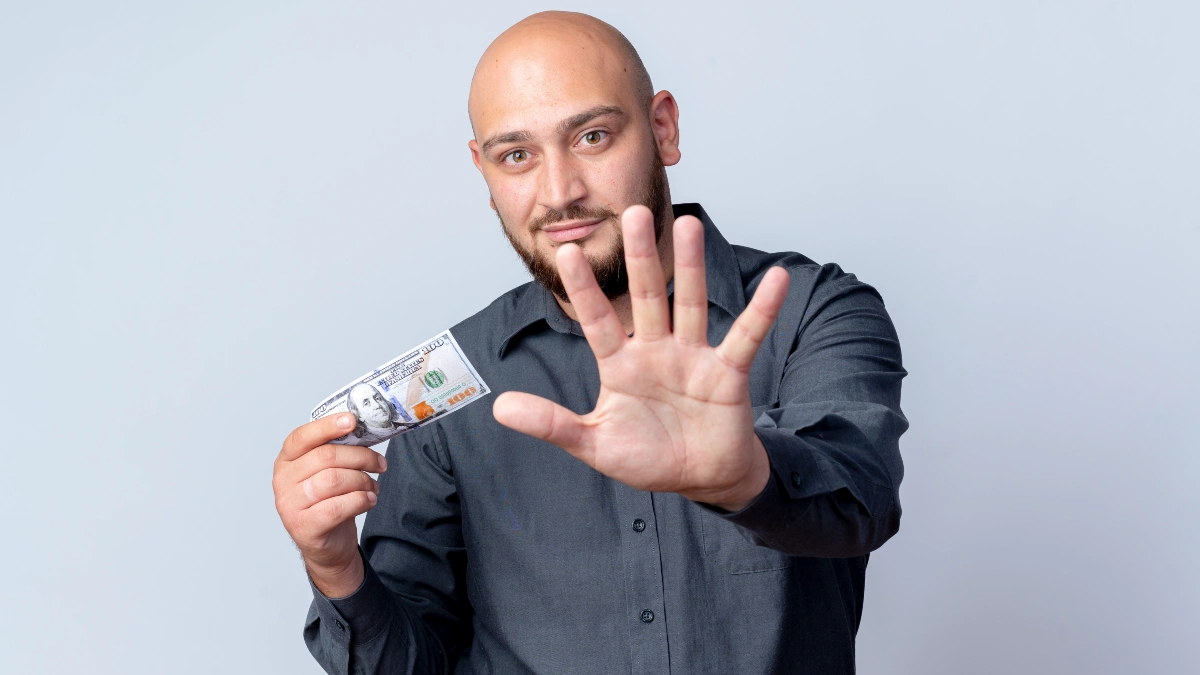
It started as a low hum, a background static I could almost ignore. But over time, the hum grew into a roar that filled every quiet moment. It was the sound of dread.
It was the feeling of my heart lurching into my throat when an unknown number flashed on my phone. It was the slick sheen of sweat on my palms as I stood at a checkout counter, praying my card wouldn’t be declined.
It was the deliberate act of letting the mail pile up on the counter, a stack of crisp white envelopes I treated like unexploded bombs.
I was living under the shadow of a debt so large, I couldn’t bring myself to name it. Not knowing the exact number felt like a form of self-preservation, a willful ignorance that allowed me to function day-to-day.
But the protection was an illusion. The psychological burden of an unquantified debt is a unique and crushing weight. It’s a monster without a face, a shapeless fear that can attach itself to everything.
This constant, low-grade anxiety permeated every corner of my life, a condition that is distressingly common. Studies show that a staggering 83% of Americans cite money as a significant source of stress in their lives.
What I was experiencing has a name: Debt Stress Syndrome. It’s a recognized psychological response to financial hardship, and its symptoms include a toxic cocktail of denial, stress, anger, and depression. My denial was in the unopened mail.
My stress was in the sleepless nights. My anger was directed inward, a quiet, simmering rage at my own perceived failures.
I was trapped in a cycle where the fear of the truth was so paralyzing that it prevented me from taking any action, which only allowed the problem—and the fear—to grow.
The central conflict of my life wasn’t me versus my debt; it was me versus my own terror of knowing the truth.
The Anatomy of My Avoidance ($200,000 in the Making)

Like most people, I didn’t arrive at this point overnight. My $200,000 debt wasn’t the result of a single catastrophic decision but a slow, creeping accumulation of socially normalized financial behaviors.
It began, as it does for millions, with education. I signed the student loan papers with the hopeful naivete of a teenager, chasing a dream without ever taking a single finance class to understand the true cost.
That initial sum became the foundation of my debt, a burden shared by many in a country where total student loan debt stands at a colossal $1.63 trillion.
After graduation, the lifestyle creep began. I landed my first real job, and with it came the unspoken pressure to look the part.
I leased a new car, a decision that added to the $1.64 trillion in auto loan debt held by Americans. I furnished my first apartment with a credit card, telling myself it was an investment in my future.
Soon, credit cards became the solution to every small gap between my paycheck and my desires. A dinner out, a new outfit, a weekend trip—it all went on the plastic.
I diligently made the minimum payments, clinging to the pervasive myth that carrying a balance is not only normal but actually good for your credit score.
With the average credit card balance climbing to $6,730 and interest rates hitting record highs—the average APR soared to 23.37%—my balances began to spiral, growing faster than I could ever hope to pay them down.
This is the insidious nature of high-interest debt; it punishes inaction with exponential growth. My story was a textbook example of the vicious cycle linking money and mental health.
The anxiety from my student loans made me avoid looking at the statements, which allowed my credit card habits to go unchecked, which in turn deepened my financial problems and worsened my mental state.
This pattern of avoidance, which began with skipping a finance class in college, had metastasized. My final paralysis wasn’t a sudden event; it was the end-stage of a long-term, compounding pattern of fear.
The 2 A.M. Reckoning: Facing the Full $202,347.18

The turning point didn’t come from a letter in the mail or a call from a collector. It came in the dead of night, in the suffocating silence of my bedroom.
It was 2 a.m., and I was wide awake, staring at the ceiling, my chest tight with a familiar panic. Rent was due in a week, and I knew, with a certainty that chilled me to the bone, that we didn’t have the money to pay for it.
Tears streaming down my face, I shook my husband awake. The words tumbled out in a torrent of fear and shame.
I confessed that I was terrified, that I felt like I was drowning, that I hadn’t been honest—with him or myself—about how bad things had gotten. He listened, and then admitted he felt it too, the constant worry simmering just below the surface.
In that moment of shared vulnerability, we made a pact. No more hiding. It was time to turn on the lights and face the monster in the room.
What followed was one of the most painful and methodical hours of my life. We pulled out the laptop. We gathered the unopened envelopes.
One by one, we logged in: the federal student loan portal, the private loan servicer, the five different credit card apps, the auto loan website. With each new tab opened, the number grew.
We typed each balance into a single spreadsheet cell, the numbers lining up in a neat, brutal column. When we were done, we triple-checked our math and then stared at the final sum at the bottom of the screen.
$202,347.18.
The number was obscene. It felt unreal, like a score in a video game, not a weight tied to my life. It was nearly double the average U.S. consumer debt balance of around $105,000, a figure that already felt impossibly high.
My body went cold with shock, and a wave of despair washed over me. But then, something else surfaced. Beneath the horror, there was a tiny, unfamiliar flicker of relief.
The monster finally had a name. The formless, all-consuming anxiety that had haunted my every waking moment had been replaced by a concrete, quantifiable problem.
It was a massive, terrifying problem, but it was a problem I could see. And for the first time in years, I realized that what you can see, you can fight.
That act of looking, of moving the problem from the realm of emotion and fear to the realm of logic and spreadsheets, was the first and most critical step in reclaiming my life.
From Panic to Plan: My First 72 Hours of Action

In the immediate aftermath of our 2 a.m. reckoning, it would have been easy to fall into a pit of despair. The sheer scale of the number was paralyzing.
But instead, we channeled the adrenaline of our shock into immediate, decisive action. We treated it like a crisis, creating an emergency response plan for the first 72 hours.
This wasn’t about solving the whole $200,000 problem at once; it was about taking back control with a series of small, powerful moves.
Step 1: Stop the Bleeding (The Spending Freeze)

Before we could even think about paying down the old debt, we had to stop creating new debt.
That afternoon, we gathered every credit card we owned, took a pair of scissors, and cut each one into tiny, useless pieces of plastic.
It was a deeply symbolic act, a physical severing of our reliance on borrowing. For some, this might mean literally freezing the cards in a block of ice in the freezer.
For us, the destruction was more satisfying. This step was non-negotiable. It drew a hard line in the sand: from this moment forward, we would live on the money we actually had.
Step 2: Build a Lifeline (The $1,000 Emergency Fund)

Our next move was inspired by the “Baby Steps” philosophy of financial experts like Dave Ramsey. We knew that our journey would be long and that unexpected expenses were inevitable.
The greatest threat to our new, credit-free life would be a minor emergency—a flat tire, an unexpected medical bill—that would force us back into debt and derail our momentum.
To prevent this, our absolute first financial goal was to scrape together a $1,000 starter emergency fund.
We sold things we didn’t need, picked up extra shifts, and cut every non-essential expense until we had that cash buffer sitting in a separate savings account.
This wasn’t just money; it was a psychological safety net, a small wall between us and the chaos that had defined our lives for so long.
Step 3: List Every Enemy (The Master Debt List)

With the bleeding stopped and a small lifeline in place, it was time to formally catalog every single one of our financial enemies. We went back to our spreadsheet and created a master list.
For each of our debts—the student loans, the credit cards, the car loan—we listed four key pieces of information: the name of the creditor, the exact total balance, the interest rate (APR), and the minimum monthly payment.
This document became our battle plan. It was a stark, honest accounting of the challenge ahead, the raw data we would use to build our strategy. These three initial actions—Stop, Save, List—required no complex financial wizardry. They were simple, sequential, and achievable.
In doing them, we began to build something that had been missing for years: the psychological momentum and the profound feeling of being in control of our own destiny.
Choosing My Weapon: Why the Debt Snowball Was My Only Choice

With our master debt list complete, we stood at a critical crossroads. We had a finite amount of extra money we could throw at our debt each month, and we had to decide where to aim it.
Our research led us to the two most popular debt repayment strategies: the Debt Avalanche and the Debt Snowball.
The Debt Avalanche is the mathematician’s choice. You list your debts in order of interest rate, from highest to lowest, and attack the one with the highest APR first.
This method saves you the most money on interest over time and is, on paper, the fastest way to become debt-free. It’s logical, efficient, and financially optimal.
When I looked at our list, this meant we should start by throwing every spare dollar at my massive, 7.8% interest rate private student loan. The thought of it made my stomach clench.
It would take years—years—to pay that single loan off. The idea of working so hard for so long without seeing a single account disappear felt demoralizing, and it triggered the old, familiar sense of being overwhelmed.
Then we discovered the Debt Snowball. Championed by Dave Ramsey, this method instructs you to list your debts by balance, from smallest to largest, and ignore the interest rates entirely.
You make minimum payments on everything, but you unleash all your extra cash on the smallest debt until it’s gone.
Then you take the money you were paying on that debt and roll it, like a snowball, into the payment for the next-smallest debt. For us, this meant starting with a pesky $540 balance on a retail store credit card.
We could wipe that out in two months. The thought of eliminating an entire debt—of getting a “win”—so quickly felt like a jolt of pure energy.
In that moment, I understood a fundamental truth that would guide our entire journey: paying off debt isn’t just about math; it’s about behavior.
For someone like me, who was recovering from years of financial fear and avoidance, psychological sustainability was far more important than mathematical optimization.
We needed the motivation that came from quick, tangible victories to build the momentum required for a multi-year marathon. The Debt Snowball provided that. It was designed for humans, not spreadsheets.
| Feature | Debt Snowball | Debt Avalanche |
| How It Works | Pay off debts from smallest balance to largest, regardless of interest rate. | Pay off debts from highest interest rate to lowest, regardless of balance. |
| Primary Pro | Psychological Wins: Generates motivation and momentum with quick, early victories.[11, 14] | Mathematical Efficiency: Saves the most money on interest payments over the long term. |
| Primary Con | Costs More: You may pay more in total interest over the life of the loans.[11, 12] | Delayed Gratification: It can take a long time to pay off the first debt, potentially leading to burnout.[14, 15] |
| Best For… | Individuals who feel overwhelmed and need to see tangible progress quickly to stay motivated.[11, 15] | Highly disciplined individuals who are motivated by numbers and long-term cost savings.[11, 12] |
Choosing the Debt Snowball was a strategic mental health intervention. Each small debt we eliminated was a powerful dose of positive reinforcement, rewiring the old feedback loop of stress and avoidance into a new, empowering one of action and accomplishment.
It might have cost us a little more in interest, but it was the only plan we knew we could actually stick with, and that made it priceless.
The Unsexy Work of a Budget That Actually Works

With our strategy chosen, we had to face the next unglamorous truth: our debt snowball would go nowhere without fuel.
That fuel had to come from our income, and the only way to find it was to create our first real budget.
The word “budget” had always sounded like a financial straitjacket to me, a list of all the things I couldn’t do. But I soon learned the opposite is true.
A budget is not a tool of restriction; it is a tool of liberation. It is the act of “telling your money where to go instead of wondering where it went”.
The process was humbling and, frankly, shocking. We printed out the last three months of our bank and credit card statements and went through them line by line with a highlighter.
It was a brutal confrontation with our own habits. We were hemorrhaging money through a “death by a thousand cuts”—the $6 daily coffees, the multiple streaming subscriptions we barely used, the shocking amount we spent on takeout and delivery.
We weren’t living extravagantly, but our mindless, passive spending was costing us thousands of dollars a year.
We adopted a zero-based budgeting approach, a method where every single dollar of income is assigned a job before the month begins.
Some dollars were assigned to rent, others to groceries, and every remaining dollar was assigned to our smallest debt.
There was no leftover money, no gray area. This forced us to be intentional with every cent. It transformed our relationship with money from one of passive reaction to one of active, conscious command.
It wasn’t easy, and our first few budgets were a mess, but we stuck with it, refining it each month.
My Debt-Free Toolkit
Creating and sticking to a budget is hard work, but there are incredible tools that can make it manageable. Here are the ones we found most valuable:
- For the All-In Budgeter: You Need a Budget (YNAB). This was our weapon of choice. YNAB is built around the zero-based budgeting philosophy and is incredibly powerful for gaining granular control over your finances. It has a steep learning curve and a subscription fee ($109 per year), but the money it helped us find in our own spending paid for it many times over.
- For Simplicity: PocketGuard. If YNAB feels too intense, PocketGuard is a great alternative. It connects to your accounts and gives you a simple, clear snapshot of how much money you have left to spend after accounting for bills, goals, and recurring expenses. The premium version also includes a debt payoff planner.
- For Couples: Honeydue. Budgeting with a partner can be fraught with tension. Honeydue is a free app designed specifically for this. It allows you and your partner to link accounts, track shared bills, and decide what financial information to share and what to keep private, all while facilitating communication about money.
- For Free Planning & Visualization: Unbury.me. Before committing to a paid app, a free web-based calculator like Unbury.me is an amazing starting point. You can input all your debts and toggle between the Snowball and Avalanche methods to see a visual representation of your payoff journey, including your debt-free date and total interest paid. It requires no login and is incredibly simple to use.
This unsexy work of budgeting was the engine of our progress. It provided the data we needed to make intentional, value-aligned decisions, turning the chaos of our finances into a predictable, controllable plan.
A New Frugality: The Sacrifices and Surprises

Armed with a budget and a plan, we began the hard work of freeing up as much cash as possible for our debt snowball.
This required a radical and immediate shift in our lifestyle. We entered a season of intense frugality, making sacrifices that felt extreme at the time but were absolutely essential to our success.
Our biggest move was also the most humbling: we moved in with my mom for two years.
Giving up our own space was difficult, but eliminating our largest expense—rent—supercharged our debt payoff.
We also attacked our second-largest expense: transportation. We sold my husband’s leased car, a source of pride for him, and paid cash for a 20-year-old beater that got him from point A to point B.
This single act directly confronted the car loan culture that contributes to the $1.64 trillion in auto debt weighing down American households.
Our daily lives changed dramatically. We became masters of the meal plan, saying a hard goodbye to restaurants and takeout.
Our grocery budget was lean, and we ate a lot of simple, inexpensive meals. The social sacrifices were the hardest.
We had to say “no” to almost everything: friends’ weddings in other states, weekend getaways, concerts, even simple dinners out.
It was a lonely period, and we had to constantly remind each other of our long-term goal to combat the short-term feeling of missing out.
But what surprised us most were the unexpected benefits of this new frugality. We learned how to cook delicious food together.
We discovered every free park, hiking trail, and community event in our area. Most importantly, by stripping our lives down to the essentials, we were forced to rely on each other.
Tackling this challenge as a team forged a bond between us that was stronger than anything we could have bought. We learned to reframe our mindset. We weren’t deprived; we were focused. We weren’t saying “we can’t afford that.”
We were saying, “we are choosing not to buy that, because we have a more important goal: freedom”. This narrative shift was everything. It turned a season of sacrifice into a season of empowerment.
Staying Sane on the Long Road to Zero

The initial burst of adrenaline and motivation can carry you for a few months, but paying off a six-figure debt is a marathon, not a sprint.
For us, it took years of relentless focus. Along the way, we inevitably hit walls, battled “budget fatigue,” and fought the powerful temptation to just give up and go on a vacation.
Sustaining our effort over the long haul required building a system of habits and rewards that could function even when our motivation waned.
We learned to harness the power of “Debt Snowflakes.” This is the practice of applying any small, unexpected financial windfall directly to your current debt snowball target.
A $100 work bonus, a $200 tax refund, $50 from selling an old chair online—instead of absorbing these into our budget, we would immediately make an extra payment.
Each snowflake was a mini-burst of progress, a small victory that kept our spirits up between the larger monthly payments.
Visualizing our progress was another crucial tool. We used a debt payoff planner app that showed our balances shrinking in real-time with every payment.
We also printed out a thermometer-style chart for each debt and colored it in as we paid it down.
Seeing the tangible proof of our hard work was incredibly reinforcing, making the abstract goal feel concrete and achievable.
We also learned to celebrate frugally. When we paid off a credit card, we didn’t reward ourselves with an expensive dinner that would set us back.
Instead, we followed the advice of others who had walked this path and celebrated our milestones in ways that didn’t break the budget.
We’d buy a nice bottle of wine and cook a special meal at home, or take a day trip to a beautiful hiking spot.
These small rituals acknowledged our effort and refilled our emotional reserves without compromising our ultimate goal.
Finally, it’s important to know when to ask for help. While we managed with a DIY approach, for some, the debt may be too overwhelming.
If you’re facing delinquency, collections, or lawsuits, a reputable non-profit credit counseling agency, like those certified by the Financial Counseling Association of America (FCAA), can provide a free initial consultation to help you understand your options, which might include a Debt Management Plan.
The key to long-term success is to stop relying on the fickle emotion of motivation and instead build a resilient system of habits, visual feedback, and sustainable rewards that will carry you all the way to the finish line.
Life on the Other Side of Zero

I remember the day with perfect clarity. I logged into our online banking portal, took a deep breath, and scheduled the final payment on my last student loan.
I clicked “confirm,” and a small, anticlimactic message popped up: “Your payment has been scheduled.”
And just like that, it was over. Three years, four months, and eighteen days of relentless, grinding work.
The feeling was surreal. There were no fireworks, no confetti. But that night, a profound sense of peace settled over me for the first time in my adult life.
We put on our favorite music and, just like the couple whose story had first inspired me, we danced around the living room, screaming at the top of our lungs, “WE’RE DEBT-FREE!”.
Life on the other side of zero is different. It’s not about being rich; it’s about being free. It’s the freedom to make career choices based on passion, not just the size of the paycheck.
It’s the freedom to dream about the future—buying a home, saving for retirement, traveling—without a crippling weight dragging you down. But the most profound change isn’t financial; it’s psychological.
The constant, low-grade hum of dread is gone, replaced by a quiet confidence. We faced the biggest financial monster imaginable and won.
We learned resilience, discipline, and the incredible power of working as a team. The true freedom we gained wasn’t just from our lenders; it was freedom from fear.
Conclusion
If you are reading this from inside that prison of fear, still too scared to look, I see you. I know the weight you are carrying.
I know how hopeless it feels. But your story doesn’t have to end there.
The journey of a thousand miles begins with a single step, and your journey to freedom can begin today, with one small act of courage.
Your First Three Steps to Freedom:
- Just Look: Don’t try to face it all at once. Just open one envelope. Log into one account. Find one number. That’s it.
- Write It Down: Take that single number and write it on a piece of paper. Give one small part of the monster a name.
- Tell Someone: Share that number with one person you trust—a partner, a parent, a friend. Break the cycle of shame and isolation that gives the fear its power.
You are stronger than you think. The peace that awaits you on the other side is worth the fight. It’s time to turn on the lights.






